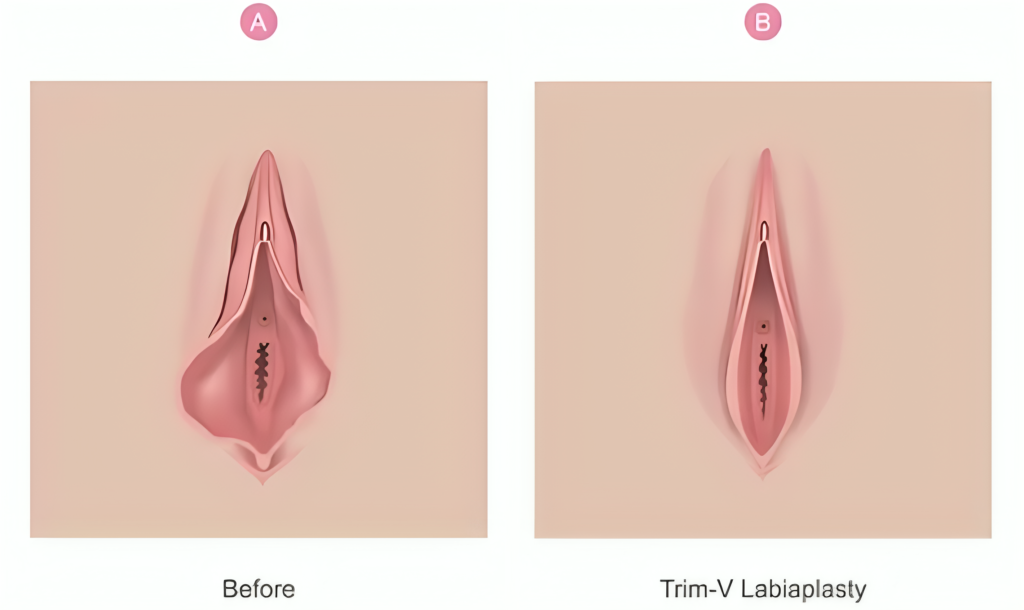Blogs

Exploring Labial Reduction: Understanding Labiaplasty
Labiaplasty, or labial reduction, is a surgical procedure designed to reduce the size of the labia minora, the inner flaps of skin on either side of the vaginal opening. This cosmetic surgery has become increasingly popular among women seeking both aesthetic and functional improvements. However, it is essential to understand the procedure, its implications, and the suitable candidates for surgery. This guide delves into labiaplasty, its reasons, the procedure, recovery, risks, and ethical considerations.
Anatomy and Function of the Labia Minora
The labia minora are integral parts of the female external genitalia. They serve several functions:
– Protection: They shield the vaginal opening and clitoris.
– Moisture Maintenance: They help in maintaining proper moisture levels.
– Barrier: They provide protection against infections.
Labia minora vary significantly in size, shape, color, and symmetry among women. Such variations are normal and rarely cause medical issues.
Reasons for Seeking Labial Reduction
Women may pursue labiaplasty for several reasons:
- Physical Discomfort
– Enlarged or elongated labia minora can cause discomfort during physical activities like cycling, running, or sexual intercourse. This condition, known as labial hypertrophy, can lead to irritation and pain.
- Aesthetic Concerns
– Some women feel self-conscious about the appearance of their labia minora, affecting their confidence, body image, and sexual satisfaction. Societal and cultural standards, as well as idealized images of female genitalia, can influence these concerns.
- Psychological Distress
– Emotional distress related to the appearance or discomfort of the labia may lead women to seek labiaplasty for improved mental well-being.
Age Considerations
Labiaplasty should not be performed on girls younger than 18. The labia minora continue to develop and change throughout puberty and early adulthood. Performing the surgery before full maturation can lead to complications and may require additional surgeries later. It is recommended to wait until at least 18 years old for the procedure.
The Labiaplasty Procedure
- Consultation and Planning
– A thorough consultation with a qualified plastic surgeon or gynecologist is essential. This includes discussing the patient’s goals, medical history, and any underlying conditions. The surgeon will explain the procedure, risks, and create a tailored surgical plan.
- Anesthesia Options
– Labiaplasty can be performed under:
– Local Anesthesia with Sedation: Numbs the vaginal area and provides sedation to keep the patient relaxed.
– General Anesthesia: The patient is put to sleep for the duration of the surgery, which may be preferred for more complex cases or anxious patients.
- Surgical Procedure
– Preparation: The surgical area is cleaned and sterilized.
– Incision and Reduction: Excess tissue is removed using techniques such as the trim method (removing tissue along the edge) or the wedge method (removing a V-shaped section while preserving the natural edge).
– Closure and Recovery: The incisions are closed with dissolvable sutures. The procedure typically lasts one to two hours, and patients usually return home the same day.
Recovery and Aftercare
- Immediate Postoperative Period
– Patients may experience discomfort, swelling, and bruising. Pain medication and cold compresses can help manage these symptoms.
- Hygiene and Care
– Keeping the surgical area clean and dry is crucial. Patients should avoid tampons, sexual intercourse, and strenuous activities for at least six weeks post-surgery.
- Follow-Up Appointments
– Regular follow-ups are essential to monitor healing and address any concerns.
Risks and Complications
Labiaplasty, like any surgery, has potential risks:
– Infection: Proper hygiene and care reduce infection risks.
– Bleeding and Hematoma: Excessive bleeding or blood collection may occur.
– Scarring and Sensation Changes: Some scarring is inevitable, and sensation changes may occur but are usually temporary.
– Asymmetry and Unsatisfactory Results: Risks of asymmetry or dissatisfaction with results may require revision surgery.
Psychological and Social Implications
The decision to undergo labiaplasty can have significant psychological effects. Women often experience improved self-esteem and body image post-surgery. However, realistic expectations are crucial, as labiaplasty is not a solution to all emotional or psychological concerns.
Ethical Considerations and Informed Consent
Labiaplasty raises ethical questions about informed consent and societal pressures. Surgeons must ensure that patients fully understand the procedure, its risks, and its benefits. Decisions should be based on personal needs and desires, not external pressures or unrealistic ideals.
Why Choose Saundarya City?
At Saundarya City, we offer expert care and personalized attention for those considering labiaplasty. Our experienced team is dedicated to providing compassionate care and helping you achieve your aesthetic and functional goals. If you are contemplating labiaplasty, schedule a consultation with our qualified surgeons to discuss your options and achieve the best results.
Ready to explore labiaplasty? Contact us today to start your journey towards enhanced confidence and well-being.
Popular Posts

Nose Surgery (Rhinoplasty)
Nose reshaping (rhinoplasty or a "nose job") is an operation to change the shape or size of the nose...

Best Hair Transplant Doctor In Nagpur Location
Saundarya City Uses Modern techniques have enabled advanced methods for surgical hair transplants that can help restore lost hair...



 Book an Appointment
Book an Appointment